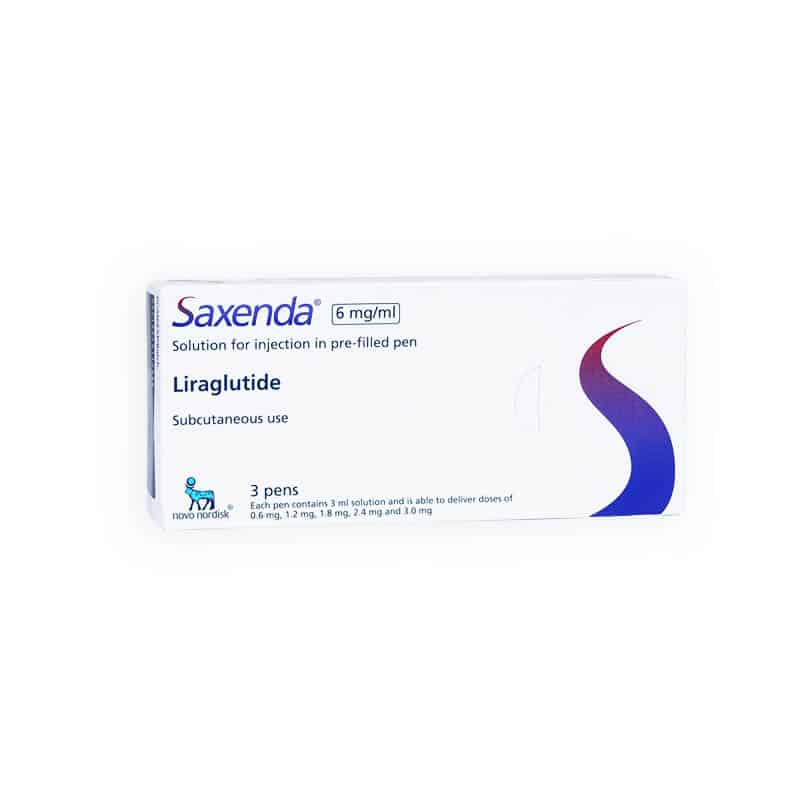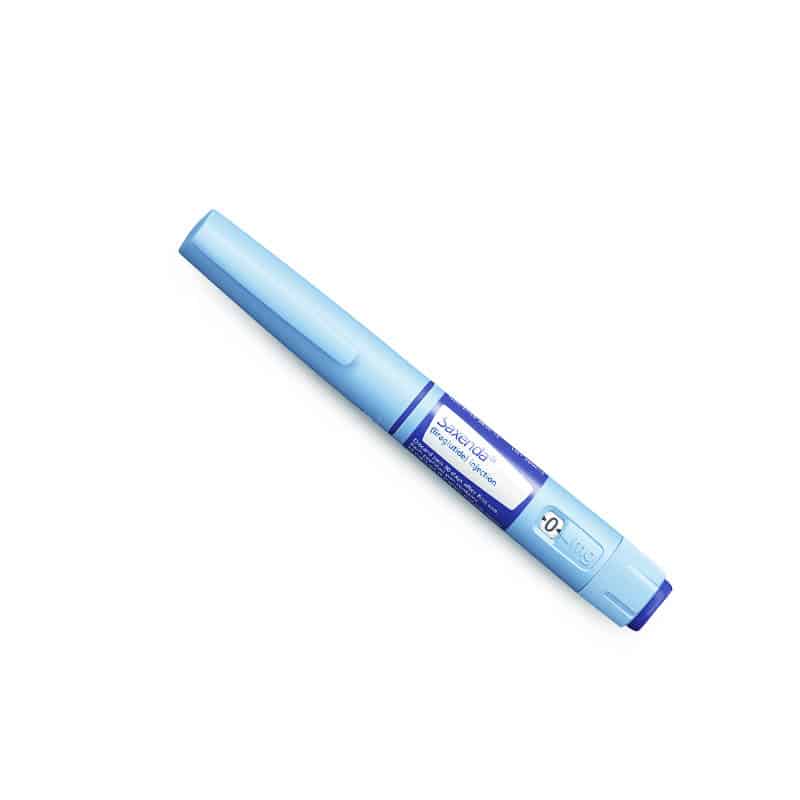Saxenda® is a glucagon-like peptide-1 (GLP-1) receptor agonist used for weight management in obese or overweight patients with related comorbidities. It acts by reducing appetite, promoting weight loss, and maintaining lower calorie intake. Saxenda® is primarily indicated as an adjunct to diet and physical activity for patients with an initial BMI of 30 kg/m² (obese) or 27 kg/m² (overweight) in the presence of weight-related conditions such as hypertension or type 2 diabetes. It is available as a 6 mg/mL solution in pre-filled syringes and is injected subcutaneously.
Saxenda® Indications for Use
Saxenda® is recommended for:
- Adult patients with a BMI of 30 kg/m² (obese) or 27 kg/m² (overweight) with at least one weight-related condition (e.g., dyslipidemia, hypertension, type 2 diabetes).
- Pediatric patients aged 12 and older with a body weight above 60 kg and an initial BMI corresponding to 30 kg/m² for adults.
Limitations:
- Not to be used with other GLP-1 receptor agonists or liraglutide-containing products.
- The safety and efficacy in pediatric patients with type 2 diabetes are not established.
Saxenda® Dosage Information
Saxenda® is administered via subcutaneous injection. Key dosing details include:
- Initial dose: Start with 0.6 mg daily for one week.
- Dose escalation: Increase weekly until the maintenance dose of 3 mg daily is reached.
- Week 1: 0.6 mg
- Week 2: 1.2 mg
- Week 3: 1.8 mg
- Week 4: 2.4 mg
- Week 5 onward: 3 mg.
- Administration sites: Injections can be given in the abdomen, thigh, or upper arm. Timing is flexible and does not depend on meals.
If a dose is missed, Saxenda® should be resumed with the next scheduled dose. If more than 3 days have passed since the last dose, restart at 0.6 mg to minimize gastrointestinal side effects.
Saxenda® Side Effects and Precautions
Common side effects affecting more than 5% of patients include:
- Nausea, diarrhea, constipation, vomiting, and injection site reactions.
- Hypoglycemia, particularly in patients with type 2 diabetes using insulin or sulfonylureas.
Serious side effects:
- Thyroid C-cell tumors: Animal studies showed an increased risk, though it is uncertain whether this applies to humans. Saxenda® is contraindicated for patients with a personal or family history of medullary thyroid carcinoma (MTC) or Multiple Endocrine Neoplasia syndrome type 2 (MEN 2).
- Acute pancreatitis: If symptoms such as severe abdominal pain occur, Saxenda® should be discontinued.
- Gallbladder disease: Reports of cholelithiasis (gallstones) and cholecystitis were observed, especially in patients with rapid weight loss.
- Suicidal thoughts: In both adult and pediatric trials, some patients reported suicidal ideation. Close monitoring is recommended, and Saxenda® should be discontinued if such symptoms develop.
Saxenda® Clinical Studies and Outcomes
Adult Clinical Trials:
- In trials involving 3,384 adults, 9.8% of patients discontinued due to adverse effects. Common reasons for discontinuation included nausea, vomiting, and diarrhea.
- Saxenda® showed significant weight reduction in adults, with patients experiencing 39.3% nausea, 20.9% diarrhea, and 15.7% vomiting.
Pediatric Clinical Trials:
- A trial in 125 pediatric patients aged 12 to 17 showed that 42.4% of patients reported nausea, and 34.4% reported vomiting. 1 pediatric patient committed suicide, although the relation to Saxenda® is unconfirmed.
Saxenda® Drug Interactions
Saxenda® may affect the absorption of oral medications due to its delaying effect on gastric emptying. While interactions with common medications, including oral contraceptives, are minimal, monitoring is advised.
Saxenda® Administration Instructions
- Proper training in injection technique is crucial to minimize the risk of improper administration. Patients should visually inspect Saxenda® before use, ensuring the solution is clear and colorless.
- Rotate injection sites within the abdomen, thigh, or upper arm to reduce the risk of cutaneous amyloidosis (localized thickening).
Saxenda® Contraindications
Saxenda® is contraindicated for:
- Patients with a personal or family history of MTC or MEN 2.
- Patients with hypersensitivity to liraglutide or other ingredients.
- Pregnant women: Saxenda® should not be used during pregnancy, as weight loss offers no benefit and poses risks.




